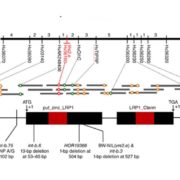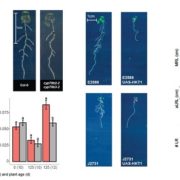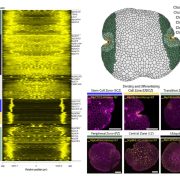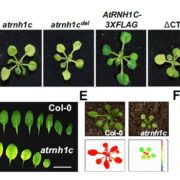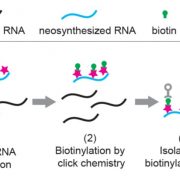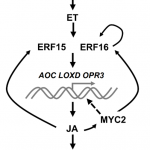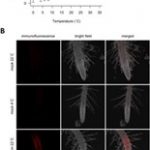BONZAIs emerge as nodal regulators of osmotic stress responses (Curr. Biol.)
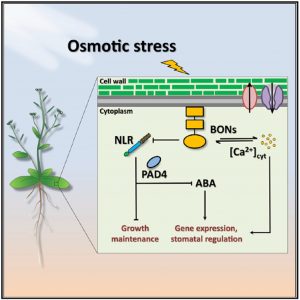 Plants launch their response to osmotic stress with a sudden spike in cytosolic Ca2+ levels, which subsequently leads to the accumulation of the phytohormone abscisic acid (ABA). This further initiates a chain of events including closure of stomata, large-scale transcriptional changes, retardation of overall growth, and the onset of early senescence. However, the mechanism by which the initial Ca2+ spike induced by osmotic stress leads to ABA accumulation remains poorly understood. In their recent study, Chen et al. identified the calcium-binding protein BONZAI1 (BON1) as a key molecular link between these events. Mutating BON1 alone or in combination with its functionally overlapping paralogs BON2 and BON3 not only hampered Ca2+ signaling but also reduced ABA accumulation, leading to severely compromised osmotic stress responses in Arabidopsis seedlings. The authors showed that BONs mediated the transcriptional changes of several adaptation genes in response to osmotic stress, a large proportion of them being regulated independently of ABA. Additionally, BONs played a crucial role in maintaining vegetative growth under osmotic stress, which also occurred largely in an ABA-independent manner. Therefore, BONs acted in the upstream of both ABA-dependent and ABA-independent responses, coordinating their activation under osmotic stress. Interestingly, the authors also found that BONs promoted osmotic stress responses by suppressing NLR receptor-mediated immune signaling, indicating their role in balancing the antagonism between abiotic and biotic stress responses to optimize the survival of plants. (Summary by Yadukrishnan Premachandran @yadukrishprem) Curr. Biol. 10.1016/j.cub.2020.09.016
Plants launch their response to osmotic stress with a sudden spike in cytosolic Ca2+ levels, which subsequently leads to the accumulation of the phytohormone abscisic acid (ABA). This further initiates a chain of events including closure of stomata, large-scale transcriptional changes, retardation of overall growth, and the onset of early senescence. However, the mechanism by which the initial Ca2+ spike induced by osmotic stress leads to ABA accumulation remains poorly understood. In their recent study, Chen et al. identified the calcium-binding protein BONZAI1 (BON1) as a key molecular link between these events. Mutating BON1 alone or in combination with its functionally overlapping paralogs BON2 and BON3 not only hampered Ca2+ signaling but also reduced ABA accumulation, leading to severely compromised osmotic stress responses in Arabidopsis seedlings. The authors showed that BONs mediated the transcriptional changes of several adaptation genes in response to osmotic stress, a large proportion of them being regulated independently of ABA. Additionally, BONs played a crucial role in maintaining vegetative growth under osmotic stress, which also occurred largely in an ABA-independent manner. Therefore, BONs acted in the upstream of both ABA-dependent and ABA-independent responses, coordinating their activation under osmotic stress. Interestingly, the authors also found that BONs promoted osmotic stress responses by suppressing NLR receptor-mediated immune signaling, indicating their role in balancing the antagonism between abiotic and biotic stress responses to optimize the survival of plants. (Summary by Yadukrishnan Premachandran @yadukrishprem) Curr. Biol. 10.1016/j.cub.2020.09.016



